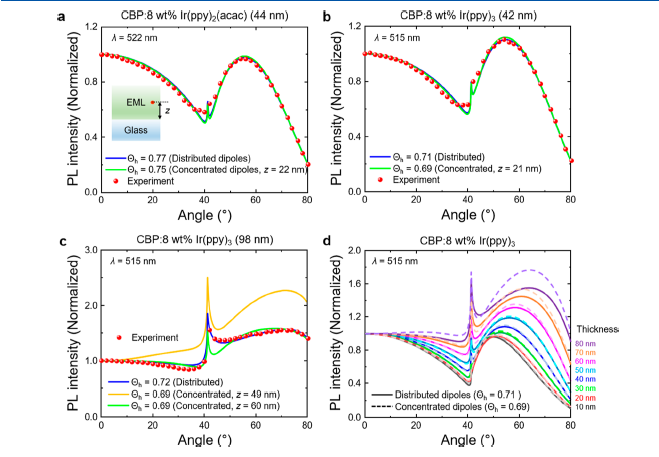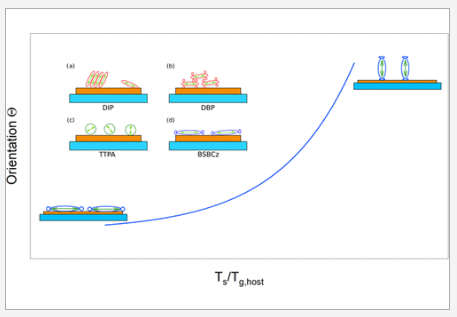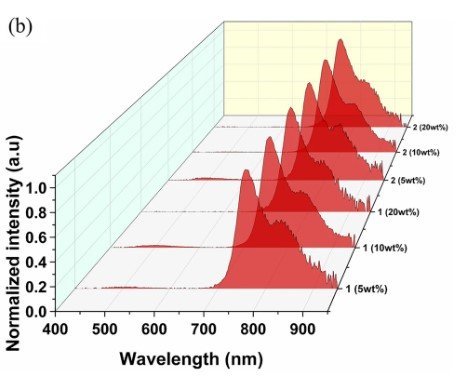
J. Roy, M. Forzatti, A. Martín, I. Ara, E. Stanzani, S. Jenatsch, H. J. Bolink, S. Fuertes, D. Tordera, V. Sicilia, Adv. Optical Mater. 2025, 2500051.
Yeonghoon Jin, Hyung Suk Kim, Donggyun Lee, Chihaya Adachi, Seunghyup Yoo, and Kyoungsik Yu
The Journal of Physical Chemistry C 2024 128 (4), 1755-1761
Binh Minh Nguyen, Markus Schmid, Johann Kirsch, Albin Cakaj, and Wolfgang Brütting
Chemistry of Materials 2023 35 (17), 7333-7343
Park, Y., Lee, G.S., Lee, W. et al.
Sci Rep 13, 1369 (2023).
Liu, Y., Yang, J., Mao, Z., Ma, D., Wang, Y., Zhao, J., Su, S.-J., Chi, Z.,
Adv. Optical Mater. 2023, 2201695
Aurimas Vyšniauskas, Simon Keegan, Kasparas Rakstys, Tobias Seewald, Vytautas Getautis, Lukas Schmidt-Mende, Azhar Fakharuddin
Organic Electronics, Volume 111, 2022, 106655, ISSN 1566-1199
M. Diethelm, A. Devižis, W.-H. Hu, T. Zhang, R. Furrer, C. Vael, S. Jenatsch, F. Nüesch, R. Hany
Adv. Funct. Mater. 2022, 32, 2203643.
Hurriyet Yuce, Diana LaFollette, Mustafa M. Demir, Carlo A.R. Perini, Juan-Pablo Correa- Baena
Sudhir Kumar, Tommaso Marcato, Frank Krumeich, Yen-Ting Li, Yu-Cheng Chiu and Chih-Jen Shih
Nat Commun. (2022), 13, 2106
Yungui Li, Naresh B. Kotadiya, Bas van der Zee, Paul W. M. Blom, and Gert-Jan A. H. Wetzelaer
Adv. Optical Mater. 2021, 2001812,
Full Tutorial: Mastering Curved Backlight Display Simulation with Laoss Optics | Step-by-Step Guide
Simulating the Opto-Electro-Thermal Effects on Large-Area Devices with Laoss Software from Fluxim
Optimizing Large-Area Perovskite Solar Cells & LEDs | Research Webinar
Phelos Videos







![Donor or Acceptor: Molecular Engineering Based on dibenzo[a,c]phenazine Backbone for Highly Efficient Thermally-Activated Delayed Fluorescence Organic Light-Emitting Diodes](https://images.squarespace-cdn.com/content/v1/6679cd2df099450d2239eee2/1734618013434-VYLZELUIMNXKU1JBHRJW/Donor%2Bor%2BAcceptor.jpg)




J. Roy, M. Forzatti, A. Martín, I. Ara, E. Stanzani, S. Jenatsch, H. J. Bolink, S. Fuertes, D. Tordera, V. Sicilia, Surfing the Color Map with Carbazole-Appended Cyclometalated N-Heterocyclic Carbene Pt Complexes and Their Application in Green Organic Light-Emitting Devices. Adv. Optical Mater. 2025, 2500051.